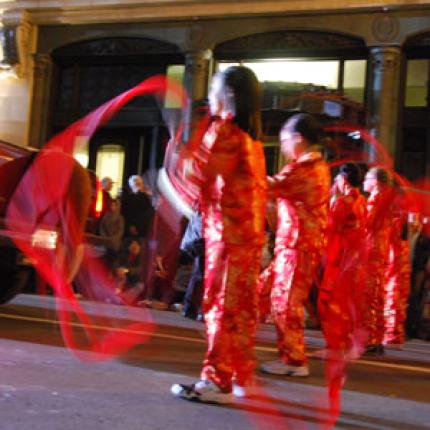This month, join EDSITEment in celebrating the Chinese New Year, recognizing Black History Month, highlighting the twentieth-century Presidents, and exploring the Salem Witch Trials.

Chinese New Year
Celebrate the Year of the Rabbit! Learn all about Chinese New Year with Lions, Dragons, and Nian: Animals of the Chinese New Year. Otherwise known as the Spring Festival, this holiday ushers in a period of family celebration and community festivities that lasts for fifteen days. The date changes from year to year and is determined by the lunar calendar. It falls on the second new moon after the winter solstice, somewhere between late January and early February; this year it began on February 3. It is the most important holiday in the Chinese calendar as well as the most joyous, serving as a celebration of life’s renewal and heralding the coming springtime as a time of reunion for family and friends.
Also have fun learning about how the twelve Animals of the Chinese Zodiac, which give their names to the year, are used as symbols, and follow the Great Wall of China to investigate the building of the Great Wall during the Ming Dynasty with the aid of an interactive map.
Black History Month
February’s Black History Month is the perfect time to investigate the tremendous contributions that African Americans have made to the history and cultural development of the United States. See the many EDSITEment lessons on these pivotal figures in the American landscape, such as Frederick Douglass, who has special significance this month, as Valentine’s Day is his adopted birthday. He took that day because his mother used to refer to him as “my little valentine!” Others important figures include Booker T. Washington, W.E.B. Du Bois, MLK, Malcolm X, Langston Hughes, Zora Neal Hurston, Lorraine Hansberry, and Maya Angelou. In addition, check out such important events as the NAACP’s Anti-Lynching Campaigns and the Harlem Renaissance.
The beginning of African American history is intricately intertwined with the history of slavery in the Americas. A new, NEH-sponsored website, Voyages, the African Slave Trade Database, aggregates information on almost 35,000 slaving voyages that forcibly transported more than ten million Africans to the Americas between the sixteenth and nineteenth centuries. The website offers researchers, teachers, and students a chance to rediscover the reality of one of the largest forced movements of people in world history.
While millions of men, women, and children were enslaved, many thousands were free. A new NEH-funded website, Crafting Freedom, focuses on nine exemplary African Americans, called “freedom crafters.” The courage and ingenuity of such individuals as Henry “Box” Brown, Elizabeth Keckly, David Walker, and Harriet Jacobs are vividly brought to life through short introductory videos. Critical themes such as resistance to slavery, black entrepreneurship, and African American creativity in the face of oppression are emphasized.
Despite the fact that slaves were not often educated, and teaching a slave to read and write was illegal in many places, thus hindering the ability of the slave community to write its own history, there are a number of primary sources for learning more about the lives of African Americans who lived under slavery. The two-part lesson Families in Bondage draws on letters written by African Americans in slavery and by free blacks to loved ones still in bondage, singling out a few among the many slave experiences to offer students a glimpse into slavery and its effects on African American family life. In the first part, you will read the letters of Hannah Valentine, an enslaved woman who lived on a Virginia plantation, to learn about her own family circle and the network of relationships to white society that defined her world.
Salem Witch Trials
This month is also the anniversary of a darker chapter in American History. The Salem Witch trials began in Massachusetts in 1692 on February 28. See the EDSITEment lesson Dramatizing History in Arthur Miller’s The Crucible. By closely reading historical documents, consider how Arthur Miller interpreted the facts of the Salem witch trials and how he successfully dramatized them in his play, The Crucible. Then turn to our lesson, Understanding the Salem Witch Trials, for the historical background on the trials to explore the underlying characteristics of the Puritan community in Salem and try to understand how and why this horrific event occurred.
About EDSITEment
Now in its eleventh year, EDSITEment is a partnership among the National Endowment for the Humanities and the National Trust for the Humanities. This free-access, user-friendly website showcases more than 300 top humanities sites that have been identified and reviewed for content, design, and educational impact in fields such as social studies, history, literature, foreign languages, art, and culture. EDSITEment also creates grade-specific lesson plans that incorporate online resources, original source materials, and interactive learning activities, games, and quizzes for use by K–12 teachers and students. Find out why the American Association of School Librarians selected EDSITEment as one the 25 Top Website for Teaching and Learning for 2010.





